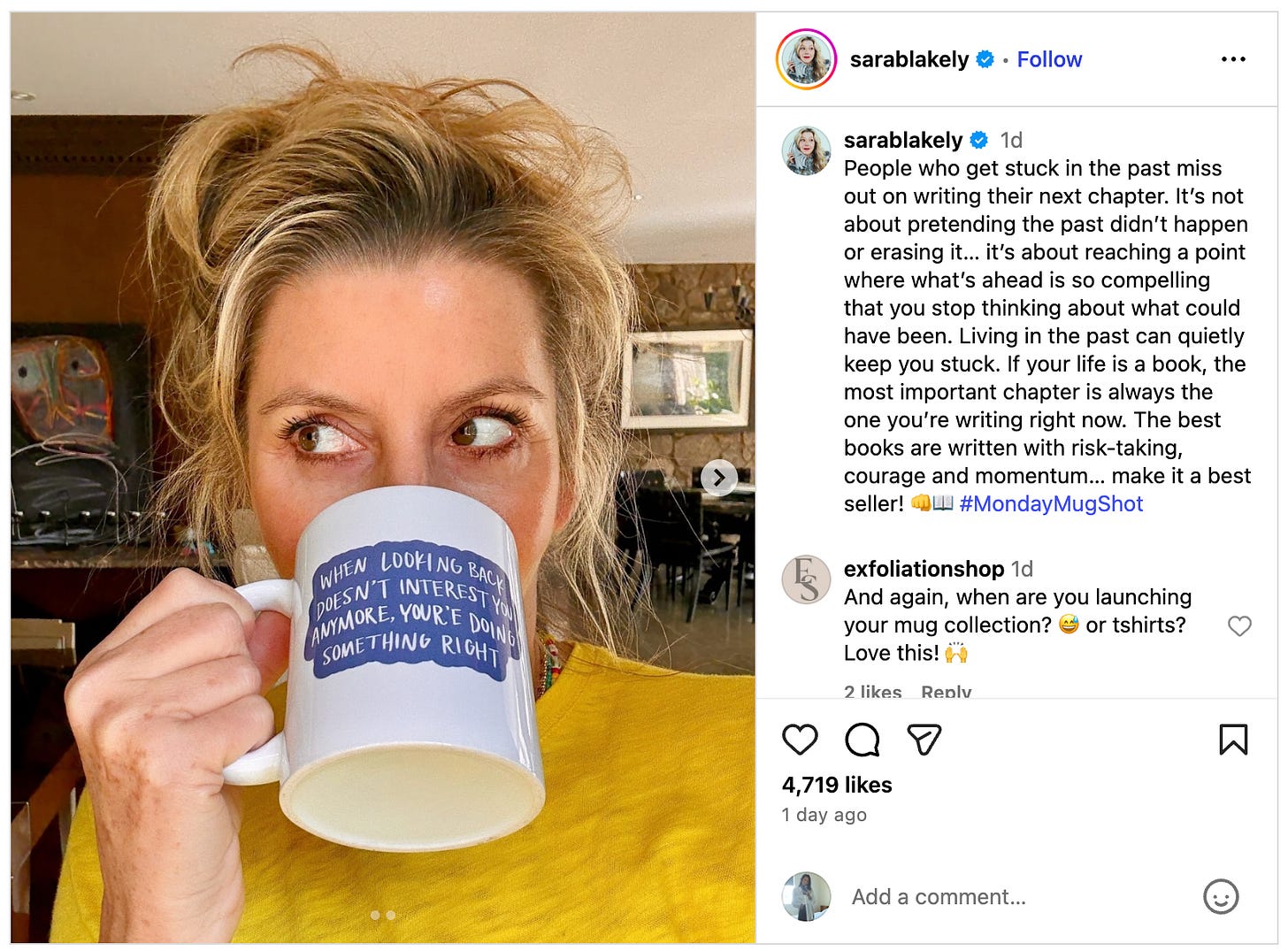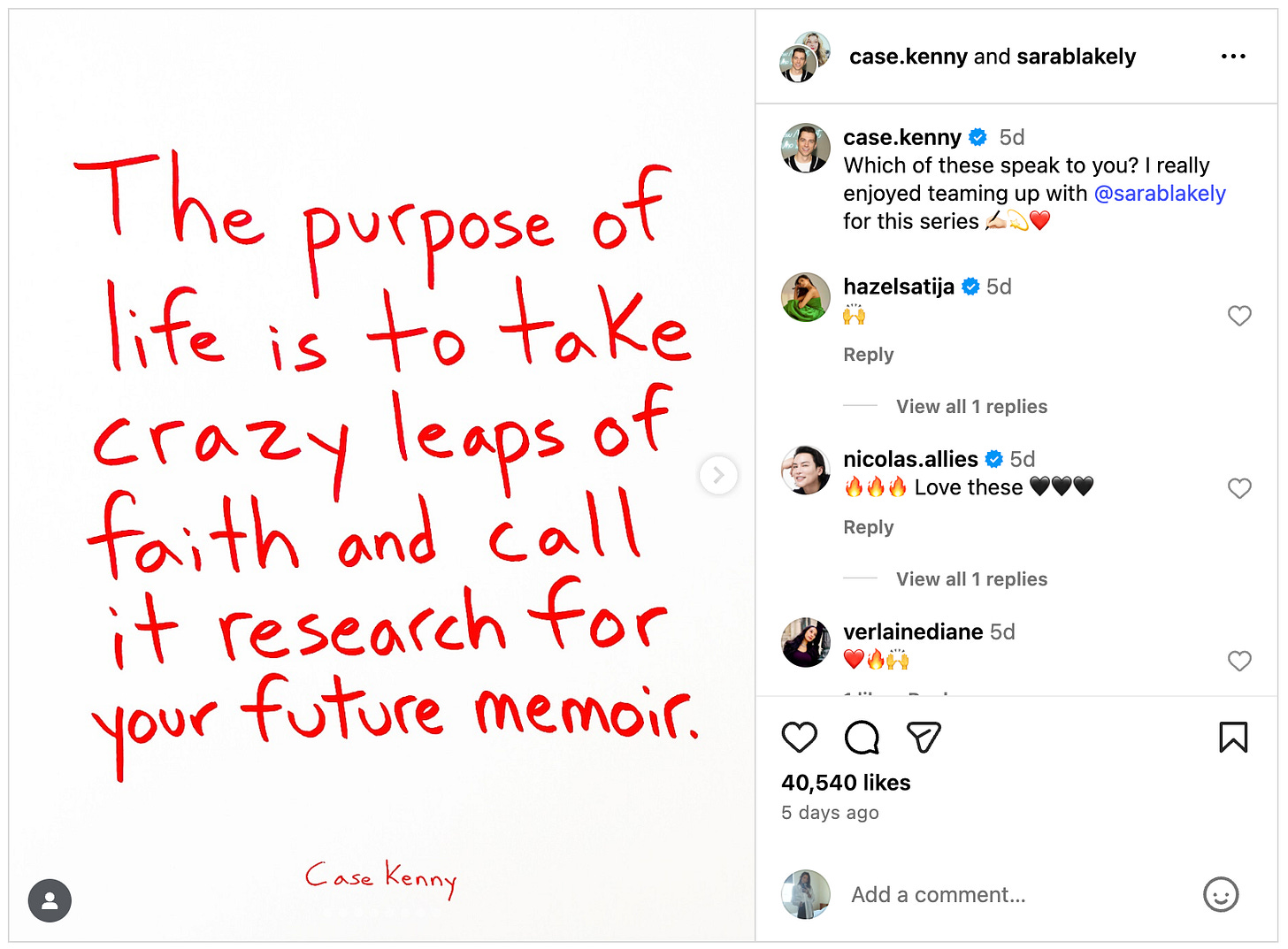nobody actually knows what they're doing
how uncertainty tolerance creates competitive advantage
Before we get into it: nobody actually knows what they’re doing, but the people who figure it out faster are usually the ones paying attention to their own patterns and the patterns that rule the systems around them. THE DAILY 5 is my five-minute framework for leveling up that awareness. No goals. No guru advice. Just a quick daily check-in that compounds over time. Paid subscribers get access to the full framework and weekly guided reflections. Get started today for 20% off annual plans.
There’s a moment in 2008 that crystallizes something most people refuse to acknowledge about how success actually works. That summer, SpaceX suffered its third failed Falcon 1 attempt—ending just over two minutes after liftoff when the rocket’s first and second stages collided. Cash was perilously tight, with only one more launch attempt realistically within reach.
Everyone with half a brain was telling Elon Musk to walk away. The smart money said three strikes, you’re out. The aerospace establishment was snickering that some PayPal guy thought he could reinvent rockets. Even his closest advisors were questioning the wisdom of pouring the last of his own money into what looked like an expensive hobby.
Elon green-lit the fourth launch anyway.
On September 28, 2008, that rocket reached orbit—making SpaceX the first privately funded company to do so with a liquid-fueled vehicle. Three months later, NASA awarded a $1.6 billion Commercial Resupply Services contract, securing the company’s survival and laying the groundwork for it to become the dominant force in commercial spaceflight.
But the aspect I want to dig into is this: Elon didn’t have some secret knowledge that made him certain it would work. He was operating on conviction, not certainty—and that distinction explains everything about why some people crush it while others stay safely mediocre.

the competence theater—
We live surrounded by competence theater. LinkedIn profiles full of buzzwords, conference speakers with perfect PowerPoints, executives throwing around five-year strategic plans like they're reading from some cosmic business blueprint. It's all performance.
The dirty secret of high achievement is that the people who seem to know exactly what they're doing are often the ones most comfortable admitting they don't. They're just better at moving forward despite uncertainty, at making decisions with incomplete information, at treating failure as data rather than verdict.
Consider Reed Hastings in 2007, announcing that Netflix would shift from DVDs to streaming. Wall Street analysts called it business suicide, warning it would cannibalize a profitable physical media business for an unproven digital model with massive content costs and technological hurdles. The tech was untested at scale, broadband penetration uneven, and content owners wary of handing over rights.
Hastings didn’t have a crystal ball showing exactly when broadband would become fast enough, how quickly smart TVs would take over living rooms, or that Netflix originals would one day anchor its library. But he did have early adoption data from the first streaming trials, trend lines in internet usage, and a thesis that convenience would ultimately beat physical media. It wasn’t certainty—it was a calculated bet on a future that the numbers suggested was coming. The difference between Hastings and the analysts wasn’t superior knowledge; it was superior comfort with acting on incomplete knowledge guided by directional data, combined with a willingness to iterate once the bet was in motion.
By 2013, streaming was the core of Netflix’s business—and the bet that looked suicidal in 2007 had become the foundation of its global dominance.

the iteration machine—
What separates the crushers from the also-rans isn't prescience—it's iteration speed. While most people spend months perfecting plans, the successful ones spend days testing assumptions. They're running experiments when others are still running spreadsheets.
Sara Blakely didn’t know anything about fashion or manufacturing when she cut the feet off her pantyhose in 1998 and decided to turn that hack into a product. She had no MBA, no industry contacts, and no market research—just $5,000 of her savings, a problem she wanted to solve, and a stubborn belief something would work. When she started pitching her idea to North Carolina hosiery mills, she was turned away over and over; most dismissed her outright. She spent two years getting rejected by manufacturers before finally convincing one mill owner—whose daughters happened to like the concept—to take her on. From there, she refined prototypes herself, filed her own patent, and packaged the first units from her Atlanta apartment. By 2000, Spanx launched and went on to become a billion-dollar brand.
Instead of quitting, she treated every “no” as an iteration cycle. The final product on store shelves was the result of hundreds of micro-experiments—each one born from rejection and refined into an edge outsiders could see before insiders could. Most people would have given up after the first dozen rejections, convinced their lack of industry expertise doomed them. Blakely didn’t—she used that inexperience as leverage, approaching problems from angles others couldn’t and moving forward without the certainty most people demand before they’ll even start.

This pattern repeats everywhere you look. The breakthrough innovations come not from domain experts with perfect plans, but from outsiders willing to try things that "can't" work. They're not smarter—they're just less attached to conventional wisdom about what's possible.

risk tolerance as competitive moat—
Here's where things get psychologically interesting: most people optimize to avoid failure rather than maximize upside. It's a reasonable strategy for survival but terrible for breakthrough success. The people who consistently win big have inverted this logic.




